Ciril Jazbec is the winner of the Leica Oskar Barnack Newcomer Award 2013 for his portfolio “Waiting to Move.” He will be presented with the prestigious award on July 3, 2013 during the Rencontres Internationales de la Photographie festival held in Arles, France.
Ciril was born in Slovenia in 1987. He studied at the University of the Arts London where he received a Master of Arts degree in photojournalism and documentary photography. His personal and assigned projects have taken him to Kiribati, Alaska, Uganda and recently Greenland. In 2012, he traveled to Shishmaref, Alaska, on assignment from GEO Germany to document the Inupiat people, who face losing their island due to the effects of climate change. His work has been published in print and online publications including GEO Germany, GEO France, La Repubblica Velvet, Wired UK, FOTO8 and Reader’s Digest.
Q: How did you first become interested in photography and pursuing it as your life’s work?
A: In primary school we had a photo club and there was a teacher who encouraged us to renovate the school’s darkroom and start working with photography. My first attempts garnered some awards at youth photography competitions, giving me motivation to keep developing my skills and discovering the magic of photography. Since I was very young I knew I would be my own boss when I grow up. So photography developed from a hobby to a profession and a lifestyle, which I enjoy immensely and for which I am eternally grateful.
Q: How do you see the role of a photographic artist in society? What is your relationship with the people who view your pictures? Is there anything else you’re trying to communicate to them other than your personal vision of the world?
A: I believe in the power of photography; otherwise I would not be able to pursue what I do with such enthusiasm. I find myself increasingly attracted to using photography to send a message. The stories that interest me nowadays are different than they used to be – I want to show positive examples of how to solve various problems of our society and the world in general. Furthermore, the West is gradually becoming terribly ignorant of the values I encounter in remote parts of the world, i.e. respect for nature and animals, connectedness and mutual respect of people. The projects I choose are those that do not merely document, but rather also inspire and remind us of the many things we tend to forget in the fast-paced world of the West.
Q: What was your reaction when you found out you won the Leica Oskar Barnack Newcomer Award?
A: I was having lunch with a friend in Ilulissat, Greenland, where I had been on the assignment for a month, when I got a call from Paris. My friend and I just had a conversation about what it takes to get more work in photography these days. I was quite shocked at first but then extremely happy and we had a few drinks to celebrate that day. It was also fantastic motivation to work very hard on my Greenland project.
Q: It seems you’ve done some commercial advertising work and documentary work as well. Is it important for you that your work is diverse? If so, why?
A: It is important for me to find balance. Personal projects are an inner journey and an inspiration, while the commercial ones are an exceptional blend of interesting people and dynamics from which exciting results are born. Lately, contracts I get for commercial projects are mostly based on my documentary style. My clients are looking to capture the moment, but also give them an aesthetic value that catches one’s attention. I enjoy such short-term projects; however, I mostly do them so I can afford documentary work. At the same time, I would never be able to focus solely on documentary projects. I undertake them very seriously and deliberately, usually taking at least a month and trying to get close to the people I am documenting, to live with them and listen to them. That’s not easy to do – it takes dedication and a lot of energy. So I am happy to accept commercial projects in-between these documentary stories, thus trying to preserve the balance and a clear, realistic view of the world.
Q: What was your primary motivation in creating “Waiting To Move,” which documents the threatened way of life of the Inupiat Eskimo barrier island community of Shishmaref in remote Northwest Alaska?
A: The story of Shishmaref is the continuation of my long-term project on climate change, which began with a story on Kiribati in the South Pacific. There was a seminar in London where I met some people who liked the Kiribati project and suggested I follow it up with Alaska, as sort of a counterweight or contrast to compare the different climate change problems.
Q: The general impression of these images is one of human beings simply living their lives – kids horsing around, ordinary people loving their kids, playing with their dogs, etc. There does not seem to be a feeling of impending doom, and maybe that’s part of the tragedy. What was the general mood of the Inupiat and how did you feel personally as you were shooting these pictures?
A: This was the most difficult photo story I had done, as the people were initially quite suspicious of my intentions and those of my journalist colleague. Because of their bad experience with the media, some of them did not even want to talk, much less be photographed. A few years ago, Shishmaref became the focal point of global media attention with the publication of photos of storms, erosion and houses sinking into the sea. It has made a public impression as a concrete example of the dramatic effects of climate change. Al Gore referred to the people of Shishmaref as the first climate refugees and asked how the community of 650 would survive the following years.
I had been in Shishmaref for almost a month, working on an assignment for GEO Germany magazine together with journalist Michael Stührenberg. Our goal was to see what has become of the media attention and hordes of journalists 10 years ago. The photo series documents the daily life in the community as it is today and the disappearing traditional ways in a village facing an uncertain future.
The island’s inhabitants voted in a referendum in 2002 to relocate the village to the nearby continent. However, nothing much has happened since then. People are waiting and waiting. The government has yet to provide the funds necessary to move the village.
Q: An image of a beefy, bearded dad sitting on an old sofa with an iPhone connected to his laptop and his boys next to him evidently playing a game on a tablet is kind of a universal image of the early 21st century that could have been shot anywhere. Its sheer ordinariness seems to convey a message and it certainly helps us identify with a fairly obscure people in an exotic location. Do you agree, and can you comment on this?
A: I have just returned from Greenland where I worked for a month in April and came back with some very similar photos of young people playing video games. Globalization is a powerful thing and you can sometimes be really impressed when you see Inuits carrying huge TV screens on their dogsled. On the one hand, I understand them perfectly, as information and images obtainable through such devices are extremely seductive. On the other hand, it pains me to see the terrifying divide between the old and young generations, and how old values and ways are disappearing. You can literally see the young generation’s indifference for anything traditional and their enthusiasm for technology, which often bears questionable content. Young people see what happens elsewhere and move to cities, leaving behind their old settlements. Personally, I find it very interesting to photograph the process, as I get the feeling I am documenting a great transition leading to an uncertain future. At the same time, this is a document and a report on what is actually happening and how the whole world is changing into a consumer society, even such remote parts of the world.
Q: One image shows a broad expanse of grass in the foreground and a little town with many white crosses in a cemetery in the background. It seems to suggest something that is firmly established and real, but also fragile and vulnerable. What does this image say to you, and what were you thinking when you took the picture?
A: The image shows the center of Shishmaref with the Lutheran church and cemetery, which had captured my attention on the very first day I spent on the island. It took me a long time to find the correct perspective for the photo. I finally found the perfect viewpoint in one of the larger houses in the neighborhood. Many inhabitants of Shishmaref, particularly older ones, worry about what is going to happen to their ancestors and their graves, should there be a great storm or should the warnings regarding climate change come true. I wanted to capture the uncertainty by taking the photo early in the morning and then at night, after a late sunset of the summer polar day.
Q: There is a compelling image of an elderly man in a flannel shirt sitting on a bed clutching the barrel of a rifle. There are banners hanging on the left and right and his expression seems to be one of grim determination. Who is this guy, what’s going on here, and what does this image mean to you in the context of your coverage?
A: This is Clifford Weyiouanna. He is 70-years-old. He is sitting in his bedroom with one of his 16 hunting rifles. After some days of knowing him, I had asked him if I could take his photo. The bedroom is full of his wife Shirley’s stuff. She died of cancer a few years ago and Clifford still misses her a lot. He is a former pilot and now an avid hunter. Every now and then he takes off for one of his cabins and stays there for days. Clifford is one of the community’s most popular members, known for his outstanding hospitality. He invites almost every visitor to the island in for sourdough hotcakes and coffee and fries them a dozen eggs. Personally, the portrait means a lot to me, as Clifford had opened numerous doors for me. He was a source of constant good cheer, which is hard to come by in the frequent inclement weather of the island.
Q: Do you plan to explore any other photographic genres or to document any other cultures going forward? What effect do you think “Waiting To Move” will have on the people you documented or on the general response to people whose way of life is threatened by climate change or rising sea levels?
A: Some of the people of Shishmaref had already seen my photos during my stay there. I usually show some photos in advance, which I consider a good way to establish a healthy relationship and trust with the people, showing them what you are interested in and what you are looking for. Some even follow my work on Facebook. In the future, I would like to continue working with documentary photography; however, I want to make it more personal and specific, expanding the documentary, illustrative aspect with my own interpretation and reflection. I would like to return to Greenland where I have begun to work on a story that has taken over my heart and mind.
Congratulations, Ciril!
– Leica Internet Team
To see more of Ciril’s work, visit his website. Also, if you’d like to learn more about the Leica Oskar Barnack Newcomer award visit: www.leica-oskar-barnack-award.com. To order your copy of LFI special edition 2013 Oskar Barnack Award, click here.

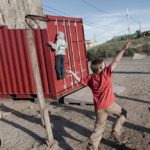

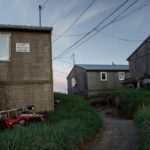
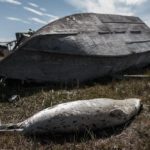
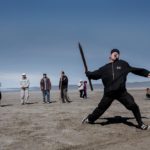
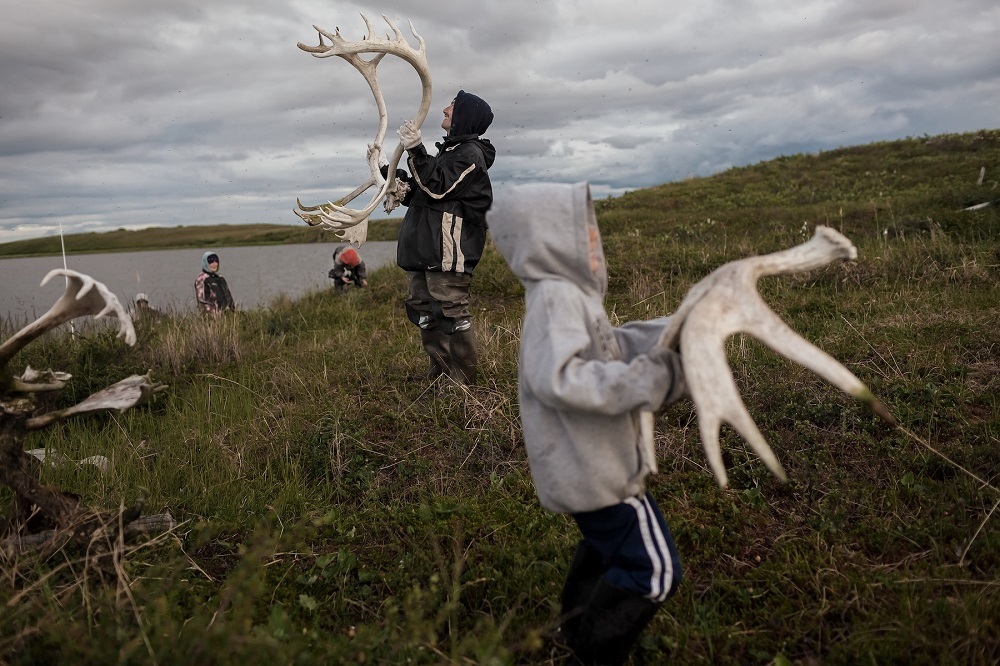




Comments (2)